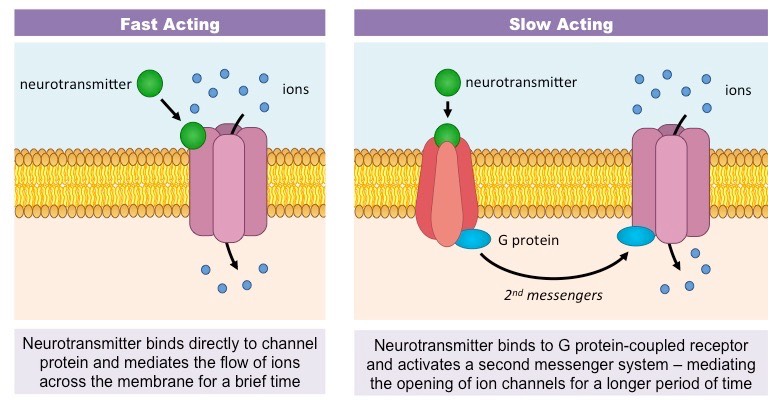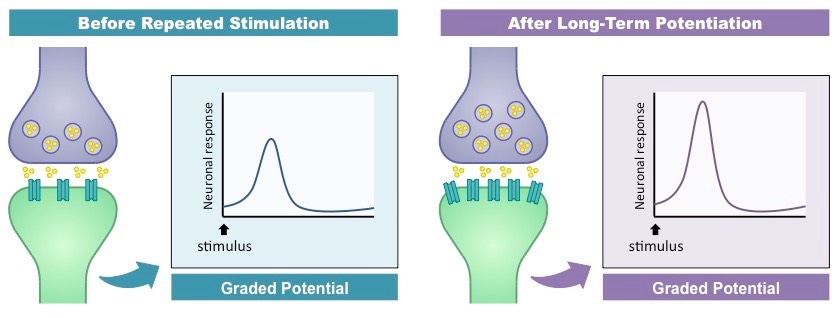![]()
Understanding:
• Many different slow acting neurotransmitters modulate fast synaptic transmission in the brain
Neurotransmitters within the brain can be classified as either fast-acting or slow-acting according to their action
- Fast-acting neurotransmitters bind directly to ligand-gated ion channels to initiate a rapid response (<1 millisecond)
- Slow-acting neurotransmitters bind to G-protein coupled receptors to initiate a slower response (milliseconds – minute)
Slow-acting neurotransmitters trigger second messenger pathways within the post-synaptic cell, which allows for:
- A longer, more sustained duration of action (i.e. ion channels remain open for longer to mediate greater depolarisation)
- Long term alterations to cellular activity to improve synaptic transfer (i.e. increased expression of ion channels)
Slow-acting neurotransmitters are called neuromodulators because they can modulate the efficiency of synaptic transfer
- Examples of fast-acting neurotransmitters include glutamate (excitatory) and GABA (inhibitory)
- Examples of slow-acting neurotransmitters include dopamine, serotonin, acetylcholine and noradrenaline
By modulating the efficiency of synaptic transfer, slow-acting neurotransmitters can regulate fast synaptic transmission
Fast Acting versus Slow Acting Neurotransmission

![]()
Understanding:
• Memory and learning involve changes in neurons caused by slow-acting neurotransmitters
Slow-acting neurotransmitters can strengthen the neural pathways involved in learning and memory
- By activating second messenger systems, they can trigger long-lasting changes to synaptic activity (long-term potentiation)
When a neuron is repetitively stimulated by slow-acting neurotransmitters, second messengers promote cellular changes:
- There is an increase in dendritic receptors in the post-synaptic neutron (improving post-synaptic stimulation)
- There is an increase in the production of neurotransmitters in the pre-synaptic cell
- Neurons may undergo morphological changes to enlarge existing synaptic connections or form new synapses
The net effect of this long-term potentiation is that certain neural pathways become easier to stimulate
- This makes certain memories easier to recall (i.e. forming long-term memories)
- This makes certain actions easier to repeat (i.e. learning of a new skill or aptitude)
Long Term Potentiation

